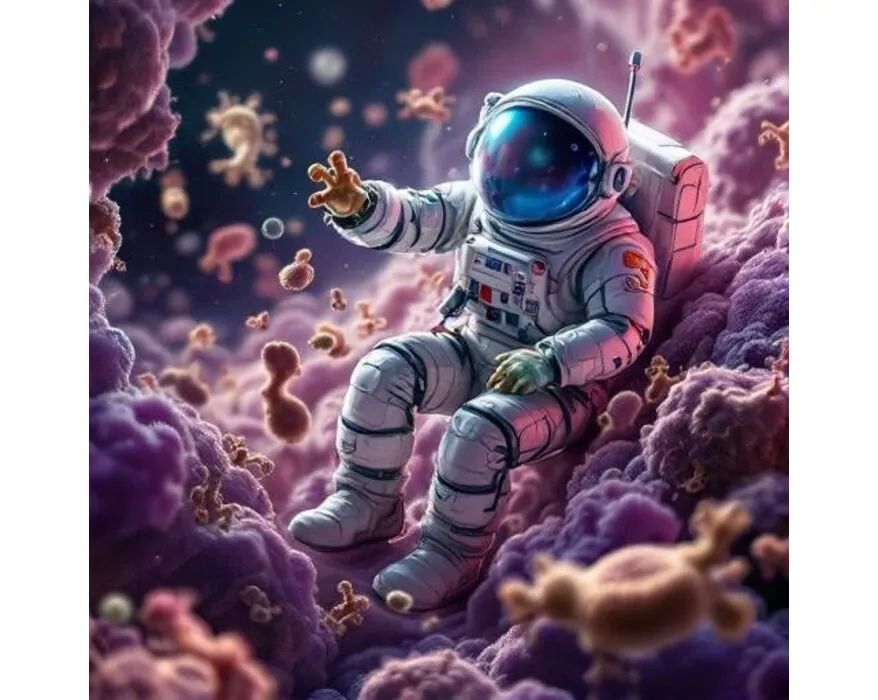From Soil to Stars: The off-planet evolution of Niallia tiangongensis
Learn how a microbe became a surprise space traveler and mutated in zero gravity!
Rockets, satellites, and perhaps a billionaire or two come to mind when we think about space travel. While Musk was headed for Mars, a common microbe traveled into Earth’s lower orbit without a ticket and returned with a story that might leave any astronaut jealous. Meet Niallia tiangongensis—a tiny germ that went into the stars aboard China’s Tiangong space station. It survived cosmic radiation and came back tougher, smarter, and ready to make headlines. A bacterium that is literally out of this world! This tiny survivor is revolutionizing our understanding of bacteria in space.
Niallia tiangongensis: A species born in space
Researchers isolated the recently identified Niallia tiangongensis, which is an aerobic, gram-positive, spore-forming, rod-shaped bacterial species, from China’s Tiangong space station.
Back in 2022, Chinese scientists took microbial samples from the space station’s surfaces as part of a regular environmental monitoring procedure. Specifically, the purpose of these swabs, collected from control panels, walls, air filters, and astronaut living quarters, was to monitor the microbiome that develops organically over time in a closed orbital habitat. Consequently, upon returning to Earth for examination, one sample was fascinating.
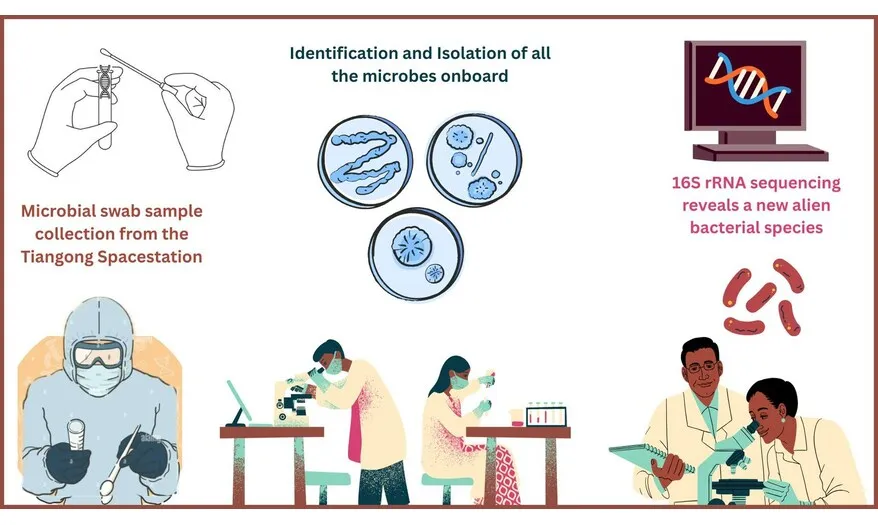
Researchers at the Chinese Academy of Sciences’ Institute of Microbiology discovered gram-positive, rod-shaped, spore-producing bacteria that did not quite match any known Earth species. The bacteria closely resembled Niallia circulans, a soil-based bacterium frequently detected in wastewater and compost. However, additional genetic analysis, such as whole-genome comparison and 16S rRNA sequencing, showed significant differences.
Over time, exposure to radiation, microgravity, and high stress probably caused it to undergo mutations in space. As a result, this gave rise to a newer, stronger version of Niallia circulans. It adapted to harsh space conditions.
Researchers named the new species Niallia tiangongensis in recognition of the Tiangong station where they found it.
From Soil to Space: Know Bacteria in Space‘s Roots
Here on the planet, Niallia circulans lead a simple life, growing in garden soil, compost piles, and even sewage. Because of its hardy nature, it can withstand heat, drought, and chemical stress by producing spores.
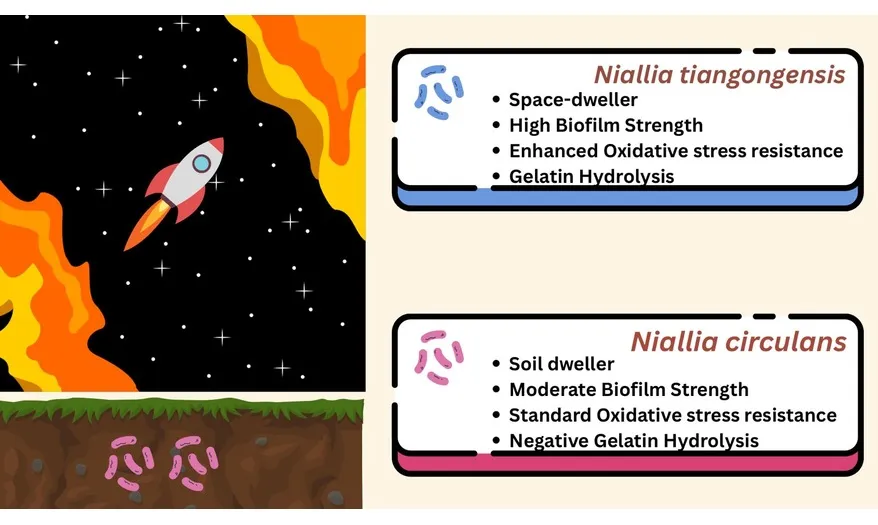
One of its cousins, however, had higher wishes, or at least better transportation.
But how did a microorganism with such lowly roots end up on a space station? It turns out that spacecraft aren’t as sterile as you may believe. Probably evolved from N. circulans, Niallia tiangongensis made its planetary premiere with accidental human assistance:
Human Carriers
The skin, intestines, and personal equipment of astronauts harbor thousands of microorganisms. This bacterium most likely traveled with someone without a boarding pass.
Contaminated Cargo
Resilient microorganisms can still hitch a ride on food containers, instruments, and laboratory apparatus, even when teams perform rigorous sterilization. Even a rare Earth strain can find a new niche while in orbit.
Environmental Persistence
Researchers found the bacteria on the internal surfaces of the Tiangong station during routine swabbing. It most likely survived radiation, dry air, and cleaning procedures thanks to its special strength of spore formation.
These illegal microbial immigrants not only survived but also transformed because of exposure to harsh space conditions. Space itself shaped Niallia tiangongensis into a genetically unique species.
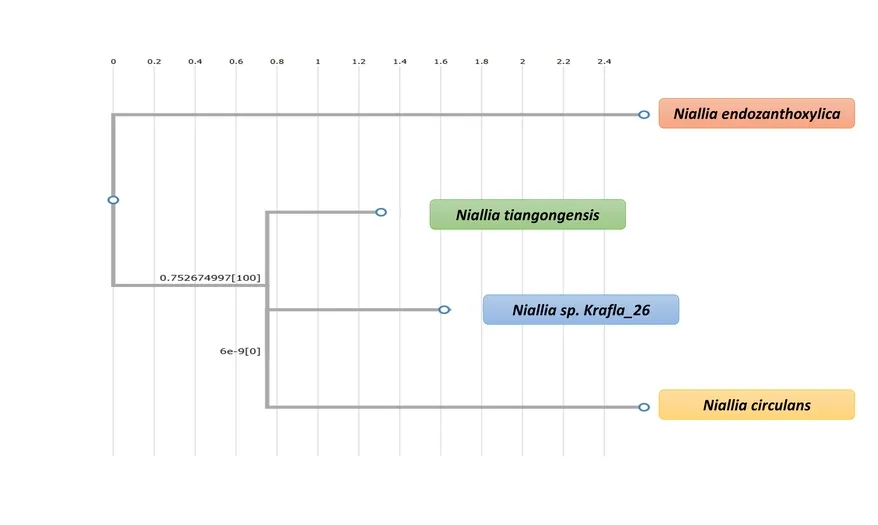
Survival in the Orbit: How Niallia tiangongensis adapted?
Space is an environment that life on Earth has never been naturally accustomed to. With no gravity, extreme radiation, drastically fluctuating temperatures, and no assured access to water or food. As a result, it’s a death sentence for most bacteria that live on Earth.
But for Niallia tiangongensis, it was an opportunity to evolve. This bacterium didn’t just survive the extremes of low Earth orbit—it adapted, mutated, and emerged genetically distinct from its Earthly cousin, Niallia circulans. Isn’t bacterial life in space cool?
Radiation
The ionising radiation that damages DNA strands and breaks apart genetic material is abundant in space. While we are largely protected from it by our planet’s magnetic field, spacecraft in orbit, such as Tiangong, are in a far more vulnerable area. This stress probably prompted Niallia tiangongensis to develop more robust internal defences. Specifically, its genome shows signs of enhanced antioxidant mechanisms. Thus, allowing the bacterium to neutralize reactive oxygen species that would normally destroy cellular components. Even more interestingly, alterations in specific membrane-stabilizing proteins, including BshB1, imply that the bacterium’s external defences also strengthened. Further, shielding it from harm caused by radiation. Together, these modifications made it more resistant to what is undoubtedly the most harmful force in space.
Microgravity
Not only does microgravity cause humans to float, but it also changes the behaviour of microbes. Nutrients fail to move naturally, fluids behave oddly, and cells grow in strange ways. Microgravity seems to have caused changes in the way the bacteria in space, Niallia tiangongensis, occur in clusters and form spores. Its modified SplA protein, which is involved in spore production, points to a sporulation system that is better adapted to the different stress conditions seen in space. It also creates thick, sticky biofilms, which are microbial colonies that bind to surfaces and protect cells from harsh environments. These biofilms are frequently denser and more difficult to remove at low gravity, which would facilitate N. tiangongensis colonisation and persistence on the station walls.
Nutrient Scarcity
Bacteria on Earth can rely on the buffet of nutrients found in the soil and water. That banquet turns into a famine in space. The only microorganisms that stand a chance are those that can use rare or limited materials. In this case, Niallia tiangongensis exhibits an unexpected characteristic. In contrast to its cousins, it can degrade gelatin, a complex protein that is normally inaccessible to bacteria of its kind. This enzymatic capability points to a change in metabolism, most likely brought on by the station’s reduced nutritional requirements. It learnt to digest what was available, not what was familiar, regardless of whether it discovers amounts of gelatin in food residue, packaging materials, or other organic matter.
Temperature Extremes
Even though spaceship interiors are climate-controlled, nearby temperatures can vary significantly because of machinery, equipment cycles, or the station’s proximity to the sun. Protein structures are always in danger of misfolding or denaturing in such thermally unstable conditions. Niallia tiangongensis seems to have made up for this by introducing small but powerful alterations that improve the stability of proteins and enzymes. Its cellular machinery is probably able to continue operating despite temperature fluctuations thanks to these modifications. This temperature tolerance, along with its enhanced sporulation processes, guarantees that the bacteria can go dormant when necessary and reactivate when conditions stabilise.
This bacterium wasn’t only stressed by space; it was recreated! From DNA-level alterations to survival traits, Niallia tiangongensis is a living example of microbial evolution in real-time.
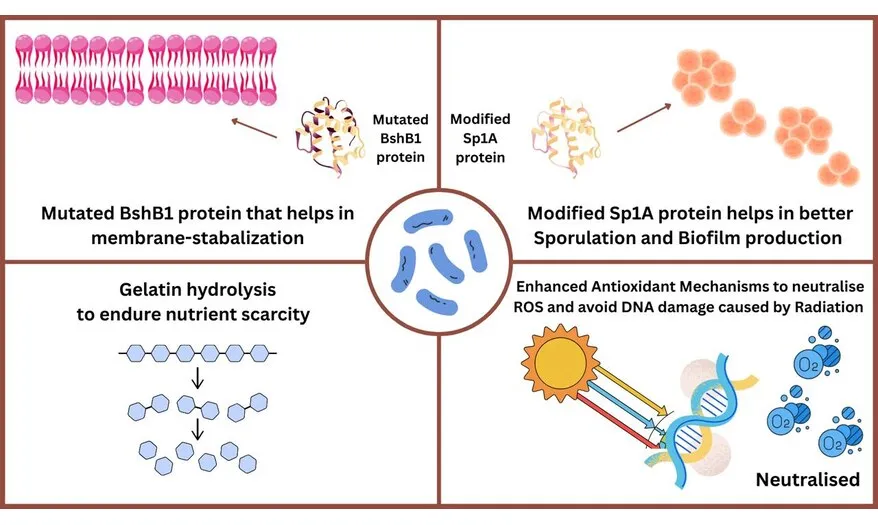
The Significance of Discovering Bacteria in Space
A Model Organism for Real-time, Off-Planet Evolution
Niallia tiangongensis’s discovery is the first step towards something far more important: a window into how life transforms after it leaves Earth’s protective cocoon. In fact, it is living evidence that space isn’t sterile and that life on Earth can take on completely different forms after being released from gravity and exposed to cosmic radiation. Its genome serves as a guide for adaptation, including changes that improve metabolism, biofilm production, and stress resistance. These are survival tactics, not arbitrary peculiarities.
This makes N. tiangongensis a model organism for space microbiology and astrobiology, according to scientists. Examining its transformation offers important information on how microbial communities might adapt in spacecraft’s closed-loop systems or even in future settlements on the Moon or Mars.
New Avenues for Medical Biotechnology
New biotechnologies on Earth may be inspired by the bacterium’s ability to survive. For example, its radiation-resistant genes might provide insight into how cells repair damaged DNA. Further, this could lead to advancements in gene editing or cancer treatments.
Its metabolic adaptability and stress-tolerant enzymes can be used to create bioagents that work in harsh environments. Such as in space or in disaster areas on Earth, where they can recycle water, produce oxygen, or clean up harmless waste.
Better Hygiene and Cleanliness Protocols
The fact that bacteria may survive and even grow well on a thoroughly sterile, pressurized spacecraft highlights the necessity for better microbial surveillance. Therefore, space agencies require more accurate methods to identify, monitor, and react to germ-related changes in orbit as space missions become longer and more independent. Furthermore, Niallia tiangongensis reinforces the notion that even simple Earth bacteria can undergo sudden evolution once they leave the planet and pose a hazard to astronauts.
Conclusion
Niallia tiangongensis’s appearance serves as a reminder of how incredibly adaptable life is. Inside China’s Tiangong space station, a regular swab resulted in the identification of a completely new species of bacteria. It went through actual, quantifiable changes as a result of being exposed to cosmic radiation, microgravity, and a closed-loop spacecraft environment. Additionally, it developed new characteristics, produced more potent spores, and genetically separated from its cousins on Earth. Fundamentally, Niallia tiangongensis poses a crucial question: What else may be possible if basic microorganisms could change so rapidly in space? If bacteria in space can adapt so suddenly, or if life can transform in low Earth orbit, maybe life could thrive in the icy oceans of Jupiter’s Europa, the methane lakes of Saturn’s Titan, or the dusty plains of Mars. Indeed, if given the right adaptations and enough time.
Additionally, to stay updated with the latest developments in STEM research, visit ENTECH Online. Basically, this is our digital magazine for science, technology, engineering, and mathematics. Furthermore, at ENTECH Online, you’ll find a wealth of information.
